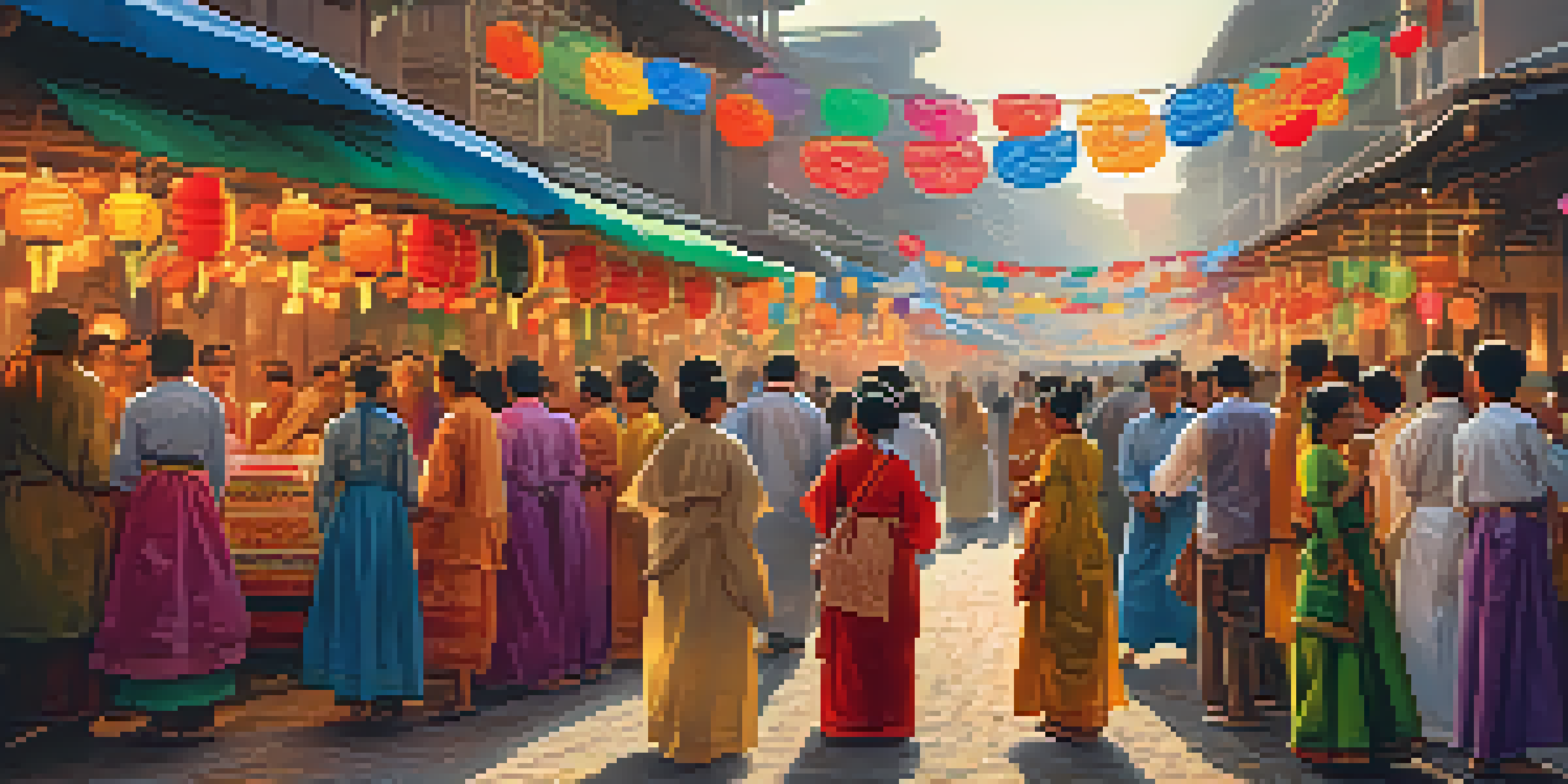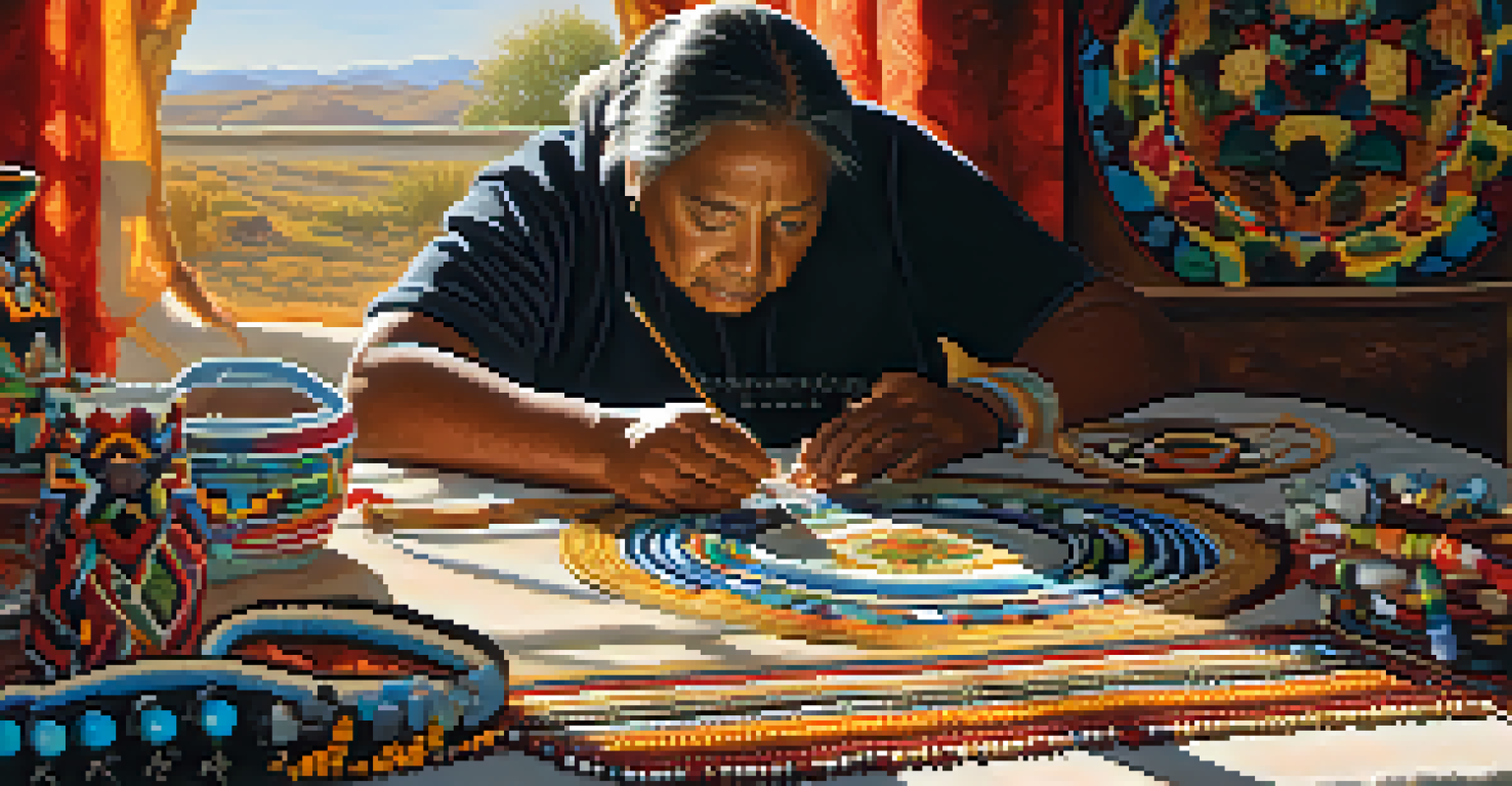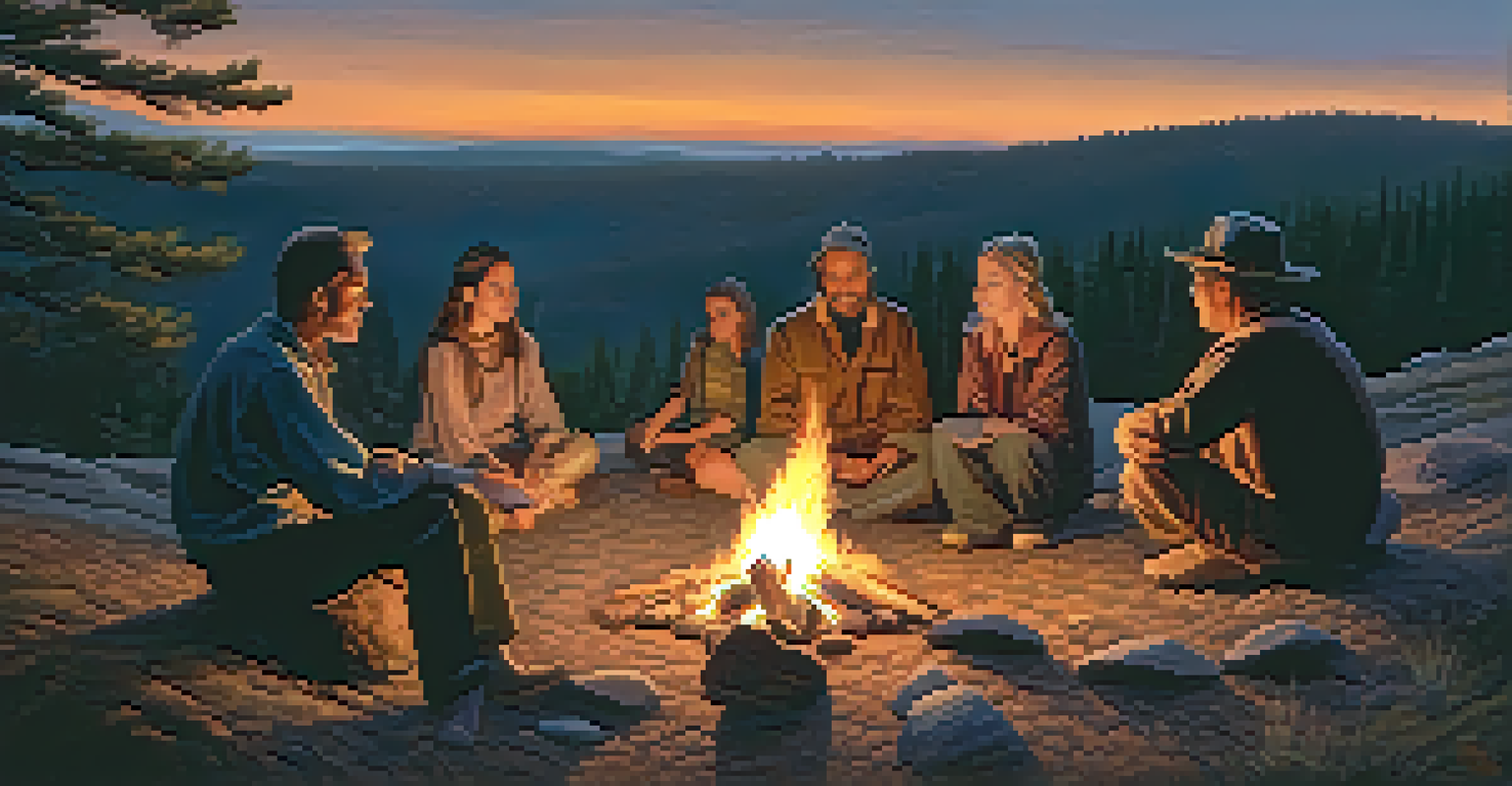The Use of Traditional Techniques in Expressing Identity

Understanding Cultural Identity Through Tradition
Cultural identity is the shared sense of belonging that connects individuals to their heritage. It encompasses values, traditions, and practices that have been passed down through generations. By exploring these elements, we can better understand how they shape our identities and influence our interactions with the world.
Culture is the widening of the mind and of the spirit.
Traditional techniques, such as storytelling, music, and art, serve as powerful mediums for expressing this identity. For instance, a folk song can encapsulate a community's history, struggles, and aspirations. Through these artistic expressions, individuals can relate their personal experiences to a broader cultural narrative.
Moreover, engaging with these traditions fosters a sense of pride and belonging. As people participate in traditional practices, they not only preserve their history but also strengthen their connection to their roots, creating a vibrant tapestry of shared experiences.
The Role of Art in Preserving Identity
Art is a universal language that transcends barriers, making it a vital tool for expressing cultural identity. Traditional art forms, such as pottery, weaving, and painting, carry significant meanings that reflect the values and beliefs of a community. Each stroke of a brush or twist of a loom tells a story that connects the artist to their heritage.

Take, for example, Native American beadwork. This intricate craft not only showcases artistic skill but also conveys messages about tribal identity and history. Each pattern and color choice holds cultural significance, linking the artisan to their ancestors and community.
Cultural Identity Through Tradition
Cultural identity is shaped by values, traditions, and practices passed down through generations.
By appreciating and supporting traditional artists, we contribute to the preservation of these art forms. This not only enriches our cultural landscape but also ensures that future generations can continue to express their identities through these time-honored techniques.
Storytelling: A Living Tradition
Storytelling is a cherished tradition in many cultures, serving as a means to pass down knowledge, values, and history. It’s a way for communities to connect with their past while shaping their identity in the present. Each story reflects the unique experiences of a culture, making it an essential component of cultural heritage.
Art is the most beautiful of all lies; it is a lie that tells the truth.
Consider the power of folktales. They often convey moral lessons and cultural values, allowing listeners to understand their community's beliefs. For instance, African griots use storytelling to preserve the history of their people, ensuring that important narratives remain alive for future generations.
In sharing these stories, individuals not only celebrate their heritage but also foster a sense of community. Each retelling strengthens bonds, creating a collective identity that is rooted in shared experiences and values.
Music as a Cultural Expression
Music is another traditional technique that powerfully expresses cultural identity. From folk songs to traditional instruments, music encapsulates a community's emotions, experiences, and history. It acts as a soundtrack to cultural life, weaving together individual stories into a larger narrative.
For instance, the rhythms of Brazilian samba reflect the rich history and diversity of its people. This music is not just entertainment; it’s a celebration of cultural identity that brings communities together during festivals and gatherings. Each beat resonates with shared experiences, creating a sense of pride and belonging.
Art Preserves Cultural Heritage
Traditional art forms express community values and beliefs, linking artists to their heritage.
Moreover, as music evolves, it often incorporates elements from various cultures, fostering cross-cultural understanding. This interplay enriches a community's identity while allowing for the continued expression of traditional values in a modern context.
Traditional Clothing and Identity
Clothing is a significant aspect of cultural identity, often reflecting a community's values, traditions, and social status. Traditional garments can tell stories about a culture's history, craftsmanship, and beliefs. Wearing these clothes often evokes a sense of pride and connection to one’s heritage.
Take the example of the Scottish kilt, which symbolizes Scottish identity and heritage. Each tartan pattern has its own significance, representing different clans and histories. When individuals wear kilts, they not only honor their ancestry but also celebrate their cultural uniqueness.
Moreover, traditional clothing can serve as a form of resistance against globalization. By choosing to wear cultural attire, individuals assert their identity and challenge the homogenization of fashion, highlighting the importance of diversity in expression.
Rituals and Ceremonies: Marking Identity
Rituals and ceremonies play a crucial role in expressing and preserving cultural identity. These events often signify important life stages, such as birth, marriage, and death, and are deeply rooted in tradition. Through these communal practices, people reinforce their shared values and beliefs.
For instance, the celebration of Diwali in India is not just a festival; it embodies themes of light overcoming darkness and the triumph of good over evil. Engaging in such rituals brings communities together, fostering a sense of belonging and shared identity.
Digital Media Enhances Tradition
While globalization poses challenges, digital media provides opportunities to showcase and preserve traditional techniques.
Participating in these ceremonies allows individuals to connect with their heritage on a deeper level. It reinforces cultural narratives and traditions, ensuring that they remain vibrant and relevant in today’s fast-paced world.
The Impact of Digital Media on Traditional Techniques
In today's digital age, traditional techniques face both challenges and opportunities. While globalization can threaten the preservation of cultural practices, digital media offers a platform to showcase and share them with a wider audience. This intersection creates a dynamic space for cultural expression and identity.
For example, artists can now share their traditional crafts on social media, reaching audiences beyond their local communities. This exposure not only promotes their art but also educates others about the significance of their cultural heritage. Such platforms can help cultivate appreciation and understanding among diverse audiences.

However, it’s essential to approach this digital sharing thoughtfully. Maintaining authenticity while embracing new mediums is key to ensuring that traditional techniques are respected and preserved for future generations.